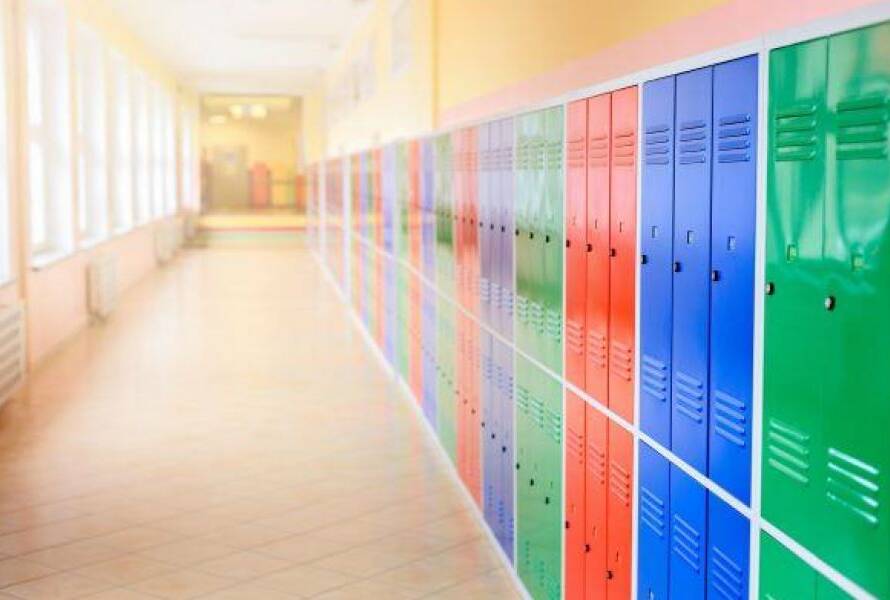The conversation around school safety has changed dramatically in recent years. While the mission remains constant—protecting students, staff, and the broader community—the threats schools face today are more dynamic and complex than ever. Gone are the days when basic surveillance and locked doors were enough. Educational institutions are now seeking smarter, more responsive tools to keep pace with rising safety expectations.
“At the core of every conversation I have with schools—whether K–12 districts or college campuses—the top concern is clear: student and staff safety. But what that looks like in practice is evolving. Modern threats include everything from active shooter scenarios to contraband on campus, and schools are expected to respond swiftly, intelligently, and comprehensively.”
From Reactive to Proactive: The Shift in Mindset
As a result, we’re seeing a shift toward integrated systems that do more than record—they alert, analyze, and enable real-time decision-making. Many schools are investing in solutions that combine video surveillance with analytics, sensors, and access control to provide a fuller picture of what is happening across campus. This isn’t just about reacting faster; it’s about preventing incidents before they escalate.
Technology is also helping schools tackle internal challenges. In high-risk areas where traditional cameras aren’t feasible—like restrooms or stairwells—modern sensors can detect abnormal noise levels, trigger words like “help,” or signs of vaping and THC use. These solutions empower schools to address behavioral and wellness issues in real time, enhancing student safety on multiple fronts. This shift—from reacting to incidents after they occur, to anticipating and intercepting them as they unfold—is what defines the next generation of campus safety.
Challenges to a Proactive Security Approach
Despite the growing need, taking a proactive approach to school security systems isn’t always straightforward. Many campuses operate on aging infrastructure, making upgrades feel daunting. Especially in older facilities, retrofitting buildings for modern systems requires flexibility, planning, and platforms that can integrate with existing tools.
Another common roadblock is mindset. Some administrators still believe their current systems are “good enough,” viewing security primarily as a post-incident resource. But effective safety strategies today are about situational awareness—knowing what’s happening in the moment and being equipped to act. That kind of real-time visibility can transform how schools handle both everyday disruptions and critical events.
Where to Start: Visibility and Integration
For schools beginning their proactive journey, the first step should be comprehensive video coverage. Visibility is foundational. Once schools can clearly monitor all areas of campus, they can make informed decisions about where to add access control, environmental sensors, or additional safety tools.
The real power of these systems comes from integration. Consider something as simple as repeated unauthorized entries through a side door at lunchtime. With a smart combination of cameras and access control, schools can not only identify the issue but address it in real time. These integrated systems offer a more complete picture, allowing administrators to respond faster and with greater context.
Enabling Remote Access Without Compromising Privacy
Remote access and cloud capabilities are also becoming vital. As more staff work flexibly or from off-site locations, the ability to access surveillance tools from anywhere is essential. Cloud-based platforms allow teachers, administrators, and even first responders to monitor the system securely and collaboratively during emergencies.
Naturally, this raises privacy questions. But open-architecture systems like Salient’s help schools strike the right balance. Schools can choose the level of analytics and the specific camera models they’re comfortable with, ensuring they maintain control over what data is collected and how it’s used. Full encryption and private VPNs also ensure student and staff data is protected while enabling remote functionality.
Thinking Long-Term: Smart Questions for Smart Investments
As schools plan for the future, leaders should look beyond hardware specs and ask deeper questions: Will this system grow with us? How well is it supported? Can we avoid vendor lock-in? Open systems provide flexibility, predictable costs, and the freedom to select best-in-class tools that fit evolving needs.
Another important consideration is service and support. Too often, end users focus on feature sets and pricing but forget to ask what ongoing help will look like. Will the vendor’s team be available to troubleshoot issues, answer questions, and assist with training? At Salient, for example, our strong support—through field reps, technical teams, and strategic partners—makes a meaningful difference in how well schools can maintain and scale their systems over time.
Budget transparency also plays a critical role. Proprietary systems can surprise districts with hidden fees or unexpected upgrade costs. An open system allows schools to plan ahead with confidence, knowing their licensing and maintenance agreements won’t balloon beyond expectations. Especially in education, where funding cycles matter, predictability is key.
Finally, schools should consider longevity. What might the system look like in five or ten years? With the right VMS, schools aren’t just investing in technology—they’re laying the foundation for a future-proof platform that can evolve as needs change and new tools emerge.
Collaboration Drives Successful Projects
Strong vendor relationships also make a significant difference. Successful projects typically involve close collaboration between schools, integration partners, and support teams. At Salient, we work to act as a bridge—coordinating with camera manufacturers, access control vendors, and installers to ensure the solution works cohesively from start to finish.
Internally, schools with a clear understanding of their approval processes are better equipped to navigate implementation. Too often, projects stall late in the process due to unexpected procurement hurdles. When technical planning is matched with logistical readiness, rollouts stay on track.
Beyond Security: Operational Intelligence for Everyday Impact
Ultimately, video and access control systems should be seen not only as security investments but as tools for improving daily operations. These platforms offer valuable insights: where students gather, how traffic flows, and when extra supervision may be needed. This operational intelligence helps schools create safer, more efficient environments.
The goal isn’t simply to respond to emergencies—it’s to prevent them, and to empower staff with the information they need to foster resilience, calm, and confidence. That’s the future of campus safety, and it’s already within reach.
Carter Rutherfurd
Carter Rutherfurd is the Regional Sales Manager for Salient Systems’ Northern California & Nevada region, where she consults with security integrators and end-users across a wide range of verticals on the value of Salient’s video management platform. She brings 4 years of experience in the physical security industry, and is known for providing strong, consultative insights into long-term security solutions for large corporations, small local businesses, and everyone in between. She has a passion for the customer and ensures each project has the right solution based on the long-term requirements developed during initial design and ongoing conversations. Much of her success can be attributed to her customer first approach and building long-term relationships.


